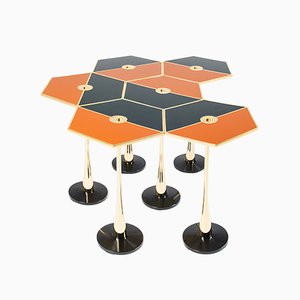Salone 2016’s Best, Through the Eyes of the Experts
Design Movements
This month, the world’s design-loving community once again descended upon the city of Milan for its annual, whirlwind Design Week. And the 2016 edition was exciting as ever, with hundreds of exhibitions presented throughout the city, spotlighting everything from design classics to today’s most cutting-edge innovations. And, of course, there were plenty of Negronis to go around.
Amidst the furor, however, a few select shows stood out above the rest. We spoke with some of today’s most respected design names—curator Maria Cristina Didero, designers Laura Baldassari and Alberto Biagetti, as well as the design experts behind DimoreStudio and Fragile Milano (all of whom continue to help shape the broader, global design conversation through their own work)—to get their takes on the greatest hits of this year’s global design lovefest. Read on for their favorites.
Laura Baldassari and Alberto Biagetti of Atelier Biagetti
Milan’s Atelier Biagetti is known for alluring, often coltish design projects that explore social mores against the backdrop of the home as domestic theater. Last year’s tongue-in-cheek Bodybuilding collection featured gymnasium-inspired objects for the home made of super-luxe materials (think metallics, furs, and leather). This year’s presentation, provocatively titled No Sex, was equally playful. Just as with Bodybuilding, No Sex was curated by Milanese curator-extraordinaire Maria Cristina Didero (her own fave exhibition pick below). But this year, instead of gymnastic rings and balance balls, No Sex featured space-age, anthropomorphic forms in sensual tones of nude and champagne pink, composed in leather, LEDs, and latex. The designers’ studio was transformed into a pink retreat—pink referring “not only to the color but also to a cozy yet entangling state of mind”—a wellness clinic where one might “detox or retox,” depending on his or her own needs, from “the overdose or abstinence of sex in contemporary life.” It was a beautiful, button-pushing scene—once again, incorporating just the right amounts of humor and drama alongside exquisite execution. Truly fab.
So what was Atelier Biagetti’s pick for the best show of Design Week?
They loved The Shit Evolution, a presentation centered around one very special material—dung—and its potential as a sustainable building material. Set in the Società d'Incoraggiamento d'Arti e Mestieri (SIAM) art school, the exhibition featured a series of rooms and objects made of “Merdacotta,” a cow-dung and clay-based material that is processed at the northern Italian farm of Gianantonio Locatelli, an agricultural entrepreneur and the owner of the Museo della Merda (the Shit Museum). (More specifics on the process available at the Museum’s YouTube channel, Shit TV.) The Shit Evolution was a collaboration between Locatelli and architect Luca Cipelletti. According to Baldassari and Biagetti: “Merdacotta is a genius invention and a fabulous material—it is ‘waste not want not’ gone mad—in a good way!” And they weren’t the only ones who liked it. Shit Evolution earned Cipelletti this year’s Milano Design Award.
Maria Cristina Didero
Independent curator Maria Cristina Didero is the woman behind some of the most talked-about contemporary design exhibitions of the past few years, showcasing the likes of Philippe Malouin, Ron Gilad, Carlo Massoud, Stephen Burks, and Studio65, among others. (This summer, Nendo gets a turn as well in a highly anticipated exhibition at the Design Museum Holon in Tel Aviv.)
This month, in addition to her project with Atelier Biagetti, Didero penned a text to introduce Italian designer Francesco Faccin’s Bronzification series for Fonderia Artistica Battaglia and Nilufar Gallery. As Didero writes: “His projects are not loud but whispered, they present themselves gracefully.” Faccin’s process-driven project began with a humble wooden plank, from which he made a wax mould. He then serially replicated the plank in bronze, creating modular pieces that might be used to create infinite designs. Every one of Faccin’s bronze planks is slightly different from the rest, revealing a sense of “transfer, movement and action,” according to the designer, and celebrating the beauty of imperfection, and the marriage of industrial repetition and art.
And what else did Didero love?
She was over the moon for An Encounter with Anticipation, a trio of installations designed by the ever-thoughtful Italian duo Formafantasma for Lexus. Inspired by the Japanese car brand’s legacy and future—and specifically its newest concept car model, the LF-FC—the exhibition included a loom-like machine that stretched and released thousand of threads to create a three-dimensional outline of the new car; a series of metal stools finished in the same paint process as the LF-FC, a sophisticated process based on traditional Japanese lacquering techniques; and a kinetic light installation powered by advanced hydrogen fuel cell technology, similar to that of the new car.
According to Didero: "I believe that Formafantasma, once again, interpreted the theme of motion in a very personal and unconventional way. Their way of looking at things from an unusual perspective makes them the most peculiar and surprising creative team on the international design scene.”
Alessandro Padoan, Fragile Milano
Gallerist Alessandro Padoan launched Fragile Milano in 2000 at the ripe old young of 27. Fast-forward 16 years, and Padoan has firmly secured his gallery’s place in the Italian design world as one of the least predictable and most visually exciting design centers out there. Two years ago, Padoan invited legends Francesco and Alessandro Mendini to design the interiors of his space on bustling Via San Damiano; the results were boldly graphic, blissfully colorful, and as far from the traditional white cube as one can get.
For this year’s Fuori Salone, Fragile’s Perspectiva exhibition carried on that joyful, experimental torch with a vibrant assemblage that included colorful, hand-woven carpets from Mendini and New York’s Joseph Carini Carpets; a lamp called Atlantide by Marco Zanuso, Jr. that sported schools of handmade, polychrome glazed copper fish; and Roberto Giacomucci’s charming brass and colored glass Empirica tables, among others. The spirit was, as always, a festive and fearless celebration of twentieth-century Italian design.
What was Padoan’s favorite?
He loved Spring to Mind, a retrospective of Ron Arad’s work for Moroso over the past quarter century. As Padoan tells us, “It was beautifully displayed by Marco Viola Studio and curated by Linda Zanolla, and it delved into the history of what ‘design after design’ is all about. It was a reminder of how important Ron Arad has been to recent Italian design history. His collaboration with Moroso represents a key shift, when the cycle of the ‘Made in Italy’ in industrial design—which previously had been so exclusive—began to open up, allowing wonderful new players and talents to come in.”
Britt Moran and Emiliano Salci of DimoreStudio:
Launched in 2003, Milan’s DimoreStudio is an interior design studio known for richly layered looks that effortlessly blend eras, materials, and styles. Cofounders Britt Moran and Emiliano Salci have designed spaces and objects for prestigious private and commercial clients around the globe, romantically juxtaposing design classics with freshly custom-made pieces. For this Salone, they bedecked their Via Solferino apartment showroom with their newest collection of furniture, textiles and wallpaper, which referenced the ’60s and ’70s throughout, with nods to Maria Pergay and Nanda Vigo as well as “a twist of landscape painting inspirations.”
Dimore’s fave?
Moran and Salci enjoyed visiting the apartment of Piero Portaluppi (1888-1967), a famed Milanese architect responsible for an array of gorgeous buildings in Milan—including the stunning Villa Necchi Campiglio—as well as the Italian pavilion for the 1929 Barcelona Universal Exposition. The opening of Portaluppi’s residence, situated inside the Casa degli Atellani and now home to his grandson, architect Piero Castellini, was organized by the Fondazione Piero Portaluppi. According to the Dimore duo, it was highly “inspirational to see another example of one of Milan’s most famous architects.”
*Special thanks to all our experts for their time and input!
More to Love
Vintage Soft Heart Rocking Chair by Ron Arad for Moroso
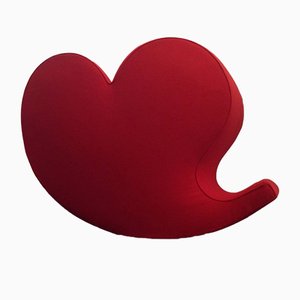
Black and White Perspectiva Low Table by Fedele Papagni for Fragile Edizione
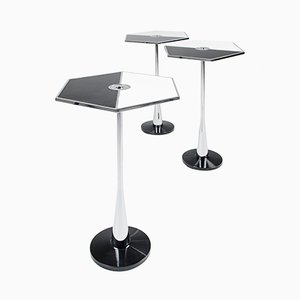
Perspectiva Low Table by Fedele Papagni for Fragile Edizione

Deriva Copper Hanging Lamp by Alessandro Mendini

Deriva Pearl Violet Hanging Lamp by Alessandro Mendini

Deriva Fluorescent Orange Hanging Lamp by Alessandro Mendini
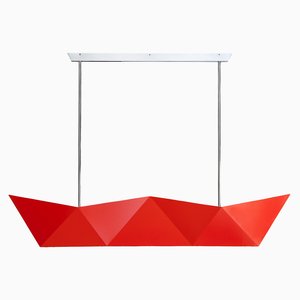
Deriva Decoration 1 Hanging Lamp by Alessandro Mendini
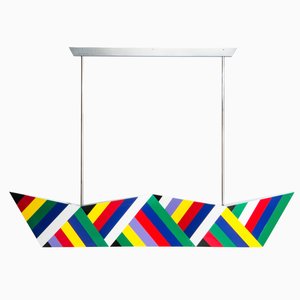
Deriva Decoration 2 Hanging Lamp by Alessandro Mendini

Deriva Decoration 3 Hanging Lamp by Alessandro Mendini

Tamiso C1466 Wall-Mounted Console by Marco Zanuso Jr.
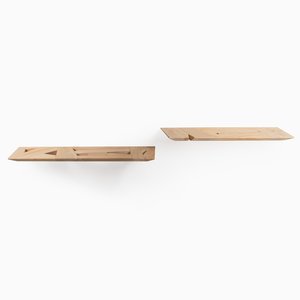
Tamiso C1467 Wall-Mounted Console by Marco Zanuso Jr.

Tamiso T1413 Round Low Table by Marco Zanuso Jr.
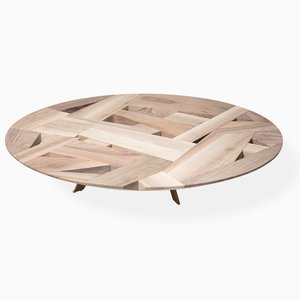
Tamiso T1406 Square Low Table by Marco Zanuso Jr.
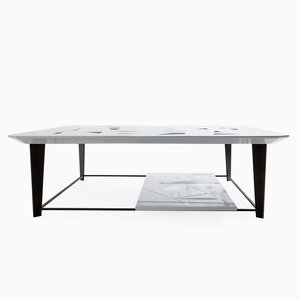
Tamiso T1423 Round Low Table by Marco Zanuso Jr.

Jellyfish Table Lamp by Marzio Rusconi Clerici for Fragile Edizioni

Tamiso C1431 Rotating Centerpiece by Marco Zanuso Jr.
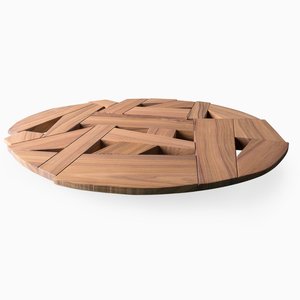
Deriva Proust Hanging Lamp by Alessandro Mendini
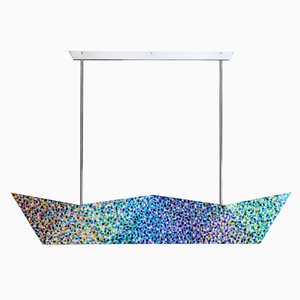
Orange Perspectiva Low Table by Fedele Papagni for Fragile Edizion
